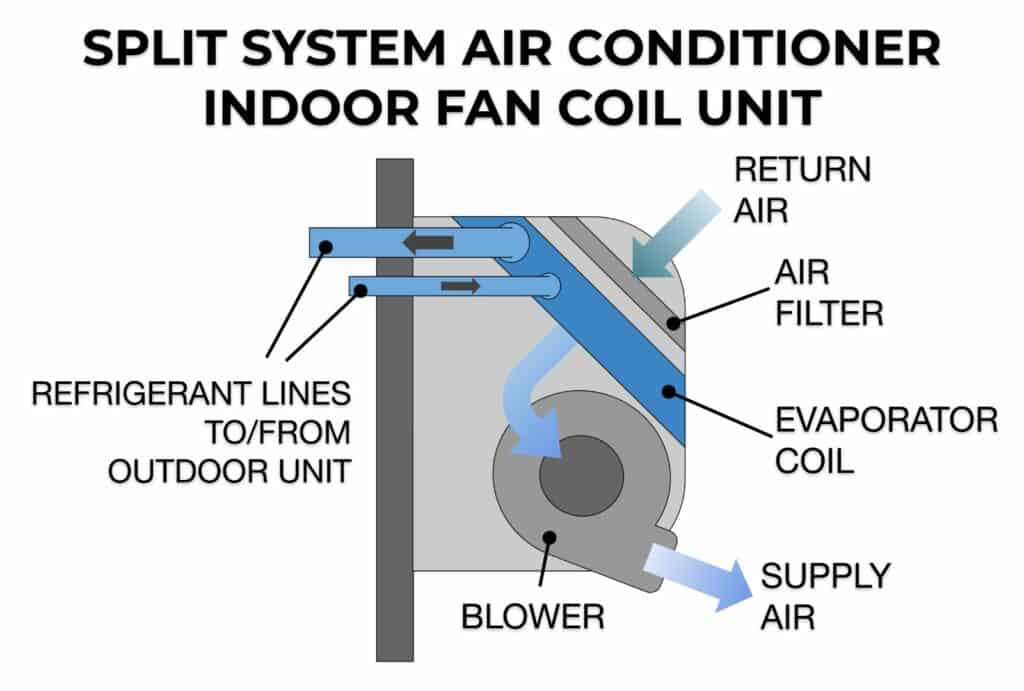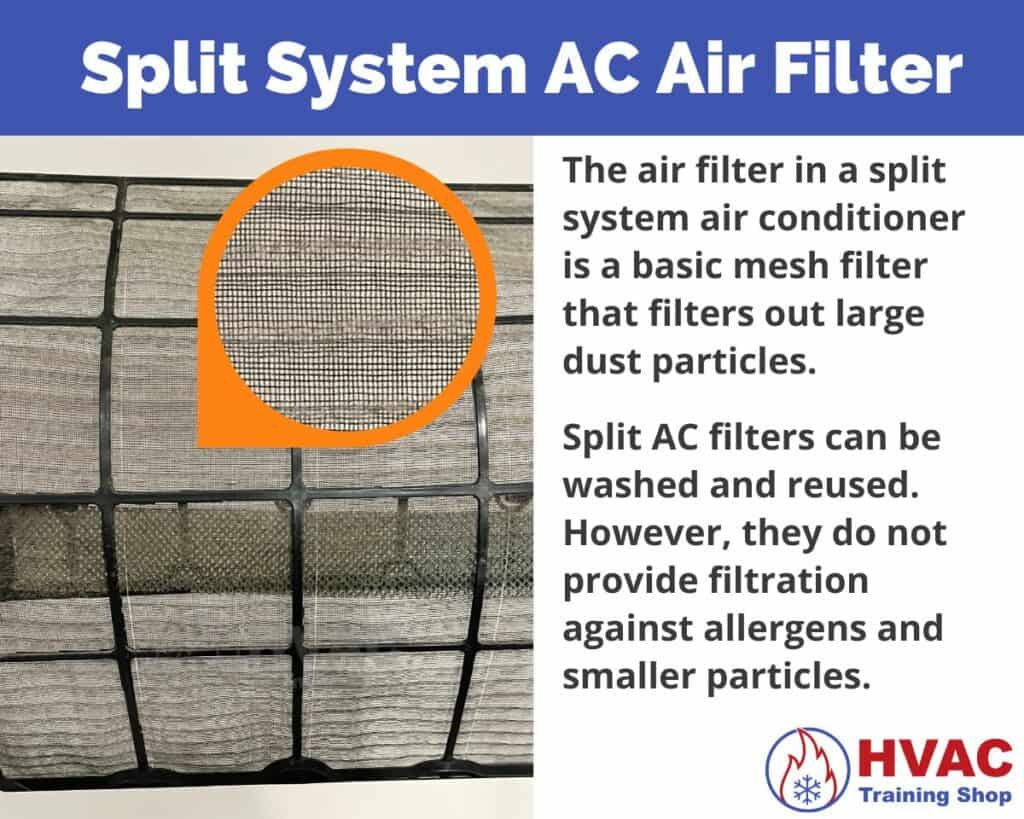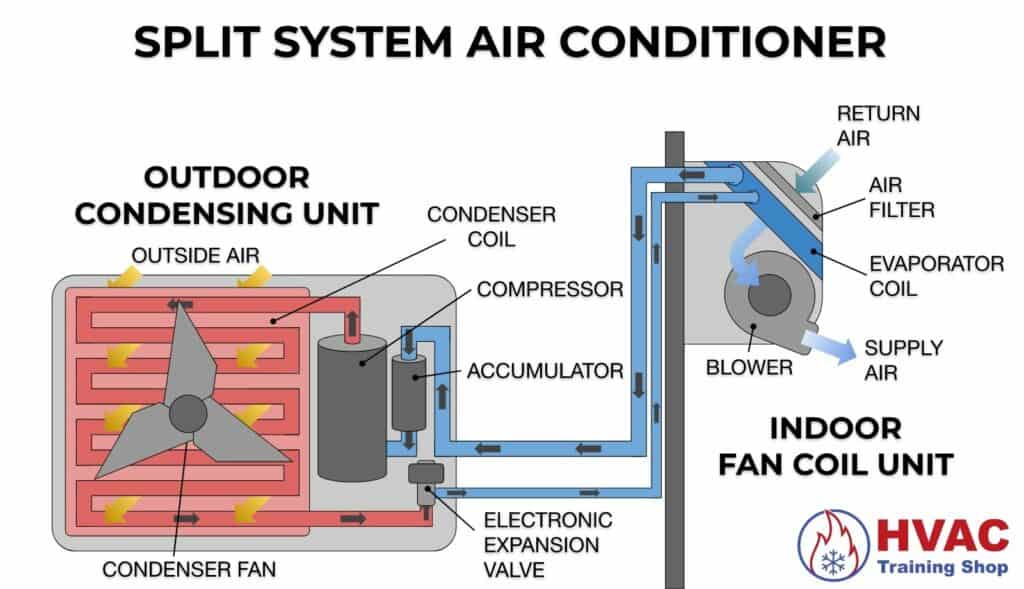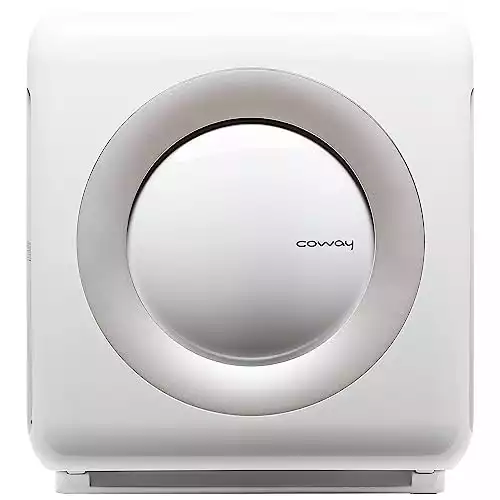HVAC Training Shop is reader-supported. As an Amazon Associate, I earn from qualifying purchases.
If you reside in a location with considerable air pollution or poor outside air quality, then the cleanliness of the air inside your home becomes a top priority.
Since split air conditioning units have an outdoor component, you might be wondering if they draw in air from the outside.
Split AC units do not bring in outside air. Instead, they take the air that’s already within your home, cool it, recirculate it, and filter it in the process.
In this article, I’ll go over all the ways that split ACs interact with outside air. I’ll also discuss how some split AC units do bring in outside air, and how to tell if your split AC is one of those.
Do Split System AC Units Provide Fresh Air?
Split AC systems do not provide fresh air in residential applications. However, certain models of split AC systems have provisions for ducted fresh air intake.
Most residential split AC units work on closed-loop air circulation, conditioning the indoor air and recycling it.

In fact, I have never worked on or installed a residential split system AC that brings in outside air.
Split AC systems with ducted fresh air intakes are usually used in commercial or industrial settings where constant air exchange is necessary due to high occupancy or specific ventilation requirements.
Some newer models of split AC units are able to bring in outside air. Those models are connected to a fresh air duct that goes outside. The outside air duct for these models usually follows the refrigerant lines. The outside air intake will be located on the outside of the home near the outdoor unit.
Do Split System AC Units Filter Air?
Split AC systems provide basic filtration for the air inside your home. As the system circulates the indoor air, it passes through an air filter that traps larger dust particles.
The air filter in a split AC is located in the indoor unit, right before the evaporator coil. The primary function of the filter is not only to improve indoor air quality by removing dust but also to protect the equipment. By trapping dust, the filter prevents substances from building up on the coil, which could reduce the system’s efficiency and lifespan.
However, the air filter in a typical residential split system AC is only a basic filter that does not filter out smaller particles such as pet dander or smoke. In fact, the air filters in most split system ACs don’t even have a MERV rating, so it’s difficult to benchmark their performance against the air filters that are used in central AC systems.

If your priority is to maintain the highest level of air cleanliness within your home, then an air purifier will provide a far more effective solution.
Air purifiers have HEPA filters that are capable of filtering out the smallest smoke, bacteria, and vehicle exhaust particles.

If you’re looking for my recommendation for a good air purifier, I recommend the Coway AP-1512HH Mighty Air Purifier. It’s the top air purifier as reviewed by The Wirecutter, and it’s the same air purifier that I use in my own home.
This air purifier comes equipped with a true HEPA filter. It is compact, extremely efficient, and has 3 fan speeds.
Do Split System AC Units Circulate Air?
Split system ACs cool and circulate the existing indoor air. This process involves drawing warmer indoor air over the evaporator coil, where the heat energy of the air is absorbed. Then the cooled air is blown back into the room.
Throughout this process, the split AC system does not pull in or mix fresh outside air into this circulation. The entire cooling operation is performed on the indoor air that is continuously circulated through the system.
The Roles of the Split AC’s Indoor and Outdoor Units
The working of a split AC system hinges on its two fundamental components:
- An indoor fan coil unit, which houses the evaporator coil and fan
- An outdoor condensing unit, which contains the compressor and the condenser coil

When the system operates, the indoor unit absorbs heat from the indoor air through the evaporator coil. This causes the indoor air to cool down, and it is then blown back into the room by the fan.
The heat absorbed by the refrigerant in the evaporator coil is then pumped outside to the condenser unit. Here, the refrigerant rejects the heat to the outside environment, cools down, and is returned to the indoor unit to repeat the cycle.
The outdoor component of split AC units exists because they need to expel heat to the outside. The outdoor unit doesn’t exchange air with the outside, it only exchanges heat.
This process of heat transfer, based on the principles of thermodynamics and fluid mechanics, allows split AC units to cool spaces efficiently.
By not bringing in outside air, split ACs avoid the added thermal load that would result from cooling hot, humid outside air. This efficient operation translates into lower energy consumption and lower operating costs.
Furthermore, the closed-loop operation also mitigates the risk of outdoor pollutants entering the system, reducing stress on the unit’s filtration mechanisms and potentially enhancing its durability and longevity.


